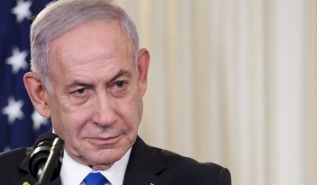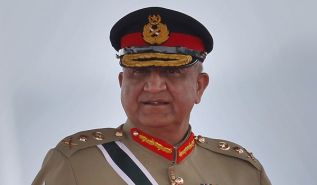بسم الله الرحمن الرحيم
The “I Love Muhammad” Episode in India Exposes BJP’s Inferiority Complex Wrapped in Majoritarian Confidence
The “I Love Muhammad” episode that erupted across Uttar Pradesh this September has once again laid bare the psychological and political contradictions driving India’s ruling Bharatiya Janata Party (BJP). What appeared, on the surface, to be a law-and-order dispute over religious banners and social-media posts, in fact, reflects a deeper anxiety - an inferiority complex that hides behind a show of majoritarian confidence.
In several towns, including Kanpur and Bareilly, Muslims who displayed banners or posted messages declaring “I Love Muhammad” found themselves facing FIRs, detentions, and demolition threats. The state government justified these actions as preventive measures against potential unrest. But absence of any violence or organised protest reveals that the problem really was not the slogan, it was the identity of those who voiced for it. On the other hand, the public expressions of Hindu faith or religious yatras are treated as natural and even celebrated. This double standard exposes the BJP’s long-standing psychological anxiety and contradiction: a politics that asserts dominance but is driven by insecurity.
The BJP’s anxiety is deeply tied to India’s vast Muslim heritage, which continues to dominate the country’s historical and aesthetic landscape. From the grandeur of Mughal architecture - the Taj Mahal and Delhi’s Red Fort to the refinement of Urdu poetry and classical music, the Muslim contribution is undeniable and enduring. Yet it is precisely this visibility that fuels the BJP’s inferiority complex. Unable to erase this heritage, the BJP attempts to rename, reframe, or politically overshadow it, renaming cities, rewriting textbooks, and questioning historical monuments. What appears as cultural revival is often a struggle against the inescapable presence of India’s Muslim past - a past too influential to deny.
To grasp this, one must return to the BJP’s ideological beginnings. Born in 1980 from the ashes of the Jana Sangh, the party remained on the margins until it discovered emotional and electoral traction in the Ram Janmabhoomi movement of the late 1980s and the demolition of the Babri Masjid in 1992 was a political turning point.
This is where the inferiority complex took institutional form. The BJP’s Hindutva project, while projected as cultural resurgence, was essentially reactive - a movement defined not by what it stands for, but by whom it stands against. It frames history as a narrative of Hindu victimhood and Muslim dominance, seeking to reverse that balance through political power. Each assertion of Muslim visibility - be it a mosque, a skullcap, or now a slogan - becomes a symbolic reminder of that imagined subjugation.
The “I Love Muhammad” row fits neatly into this pattern. The BJP government’s overreaction was less about maintaining order and more about reasserting hierarchy. By turning an act of devotion into an act of defiance, the government reinforced a message: that expressions of Muslim identity will be tolerated only under the watchful permission of the majority. The bulldozer, the FIR, and the Chief Minister’s “denting-painting” metaphor all served to dramatize power. This performance of dominance, repeated across countless incidents despite the Gujrat massacre of Muslims, masks a deeper fragility - the fear that Hindu identity needs protection in a country where Hindus are nearly 80% of the population.
That is the BJP’s paradox. The BJP cannot sustain its politics without conflict as harmony offers no electoral reward. But without any reward a remarkable harmony between Muslims and Hindus sustained for centuries in the subcontinent because of a just rule under the shade of Islam. Neither BJP nor the Indian secular constitution can guarantee such a harmony for a number of fault lines therein and for different parties struggling for power have to be secular to rule but they many times become communal to win which divides the society.
Islam’s justice system for centuries played a central role in sustaining harmony across the subcontinent by embedding fairness, accountability, and equality into governance. Rooted in the Quranic principle that all humans are equal before Allah (swt), Muslim rulers were expected to act as guardians of justice rather than owners of power. Courts often included local customs and Hindu laws for non-Muslims, that respected diversity while upholding order. Under Mughal rule, for instance, the qazi system was complemented by local panchayats, ensuring that communities could resolve disputes within familiar frameworks. Taxes like jizya were also accompanied by guarantees of protection for non-Muslims. In essence, Islamic jurisprudence in India functioned as a stabilizing framework.
For India, this again is the way forward, and not the politics of conflicts.
Allah (swt) sent His Messenger Muhammad (saw) to prevail this truth. He (swt) says:
[هُوَ الَّذِي أَرْسَلَ رَسُولَهُ بِالْهُدَىٰ وَدِينِ الْحَقِّ لِيُظْهِرَهُ عَلَى الدِّينِ كُلِّهِ وَلَوْ كَرِهَ الْمُشْرِكُونَ]
“It is He (swt) who has sent His Messenger (saw) with guidance and the religion of truth to manifest it over all religion, although they who associate others with Allah (SWT) dislike it.” [At-Tawbah 9:33].
Written for the Central Media Office of Hizb ut Tahrir by
Muhammad Malik – Wilayah Pakistan




